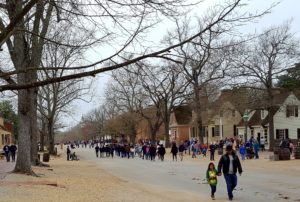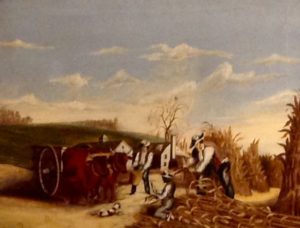 It’s a bit weird visiting Colonial Williamsburg on one’s own in the land of families, retired couples, and school groups. Layer on to that the mission of book research rather than sightseeing, and one really feels like an odd duck.
It’s a bit weird visiting Colonial Williamsburg on one’s own in the land of families, retired couples, and school groups. Layer on to that the mission of book research rather than sightseeing, and one really feels like an odd duck.
Going in, I braced myself for rehashed stories of the “founding fathers,” only to be pleasantly surprised about how much of the info centered on everyday people. “It was only a handful of elitist, highly educated men we hear about in the Revolutionary War stories,” the tour guide at the Peyton Randolph home explained, “but their experience was not that of everyday citizens.” His tour focused on Peyton Randolph’s 108 slaves, and the management of his household by Randolph’s wife, Betty. The guide’s killer fact: Circa 1775, 52% of Williamsburg residents were slaves.
 At the Museum’s Folk Art Exhibit (“We have the largest Folk Art collection in the world!” enthused the woman at reception), this painting captures not only the setting, but the power dynamics of master and slave.
At the Museum’s Folk Art Exhibit (“We have the largest Folk Art collection in the world!” enthused the woman at reception), this painting captures not only the setting, but the power dynamics of master and slave.
The Williamsburg grounds were crowded, but not so across the railroad tracks, at the quiet, pristine rooms of the John D. Rockefeller, Jr. Library. Mainly, I went in search of historic maps, and was not disappointed.
After hearing the talk about the Randolphs of Williamsburg and their slaves, on one 1731 Virginia/Maryland map I couldn’t help but notice this illustration showing both the elite British plantation owners and their slaves, the slaves included in the picture, it seems, to embellish on an idyllic image of bucolic life in the colonies.

